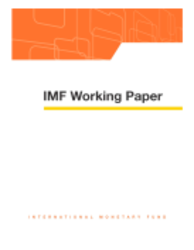
What Explains Persistent Inflation Differentials Across Transition Economies?
Panel estimates based on 19 transition economies suggests that some central banks may aim at comparatively high inflation rates mainly to make up for, and to perhaps exploit, lagging internal and external liberalization in their economies. Out-of-sample forecasts, based on expected developments in the underlying structure of these economies, and assuming no changes in institutions, suggest that incentives may be diminishing, but not to the point where inflation levels below 5 percent could credibly be announced as targets. Greater economic liberalization would help reduce incentives for higher inflation, and enhancements to central bank independence could help shield these central banks from pressures.
Publication date: July 2007
ISBN: 9781451867534
$18.00
Add to Cart by clicking price of the language and format you'd like to purchase
Available Languages and Formats
| English |
Prices in red indicate formats that are not yet available but are forthcoming.
Topics covered in this book
This title contains information about the following subjects.
Click on a subject if you would like to see other titles with the same subjects.
Inflation , panel data , central bank , monetary policy , terms of trade , monetary fund
Summary
Copyright © 2010 - 2025
Powered by:
AIDC



